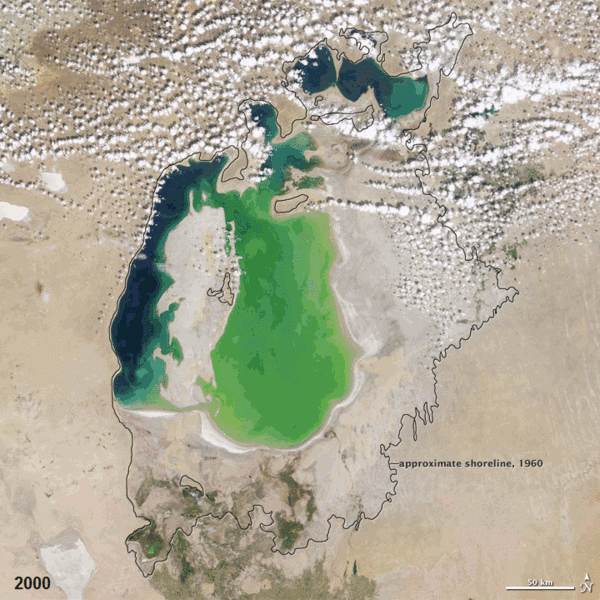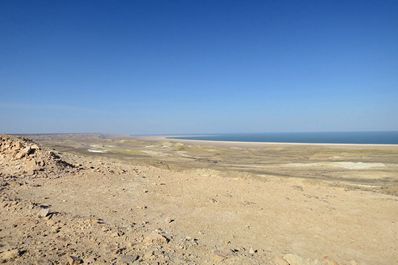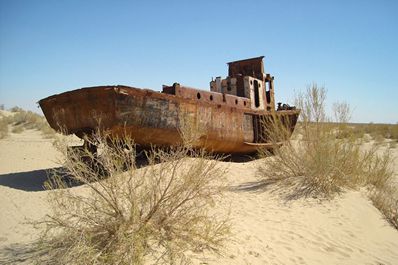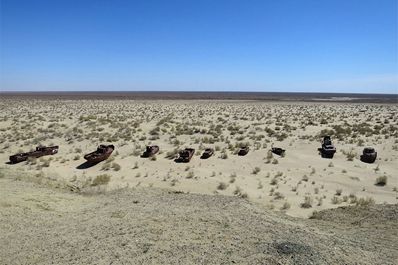The Aral Sea
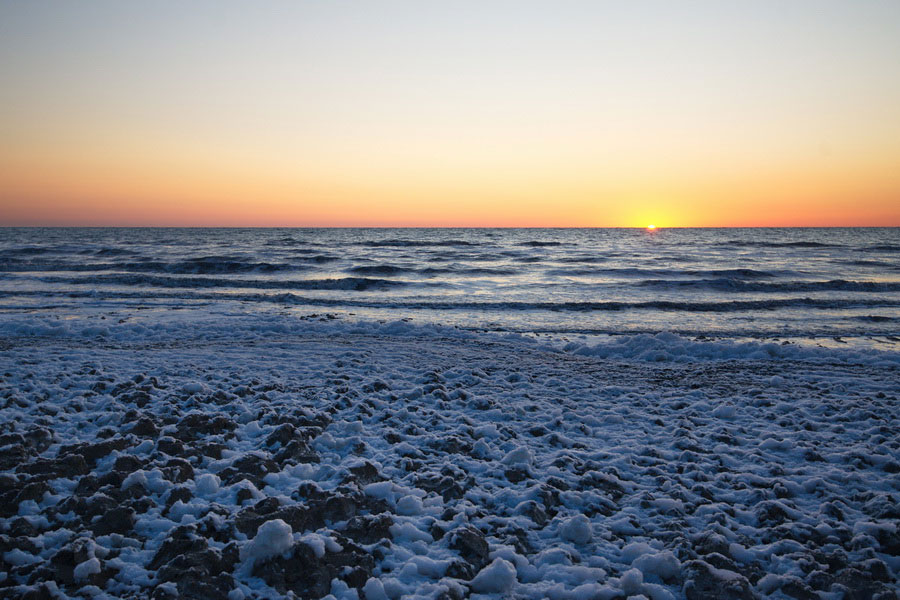
The Aral Sea... Today, the name of the lake is related with the environmental disaster. But how did it look 60 years ago? The Aral Sea is located on the border between Kazakhstan and Uzbekistan. Prior to the shallowing, the Aral Sea was the fourth largest lake in the world. It had ports, fish plants and fishing boats floated on the Aral Sea. Up to the 80es of the 20th century it was inhabited by 34 species of fish, 20 of which had marketable value. During its history the Aral Sea has shrunk out several times as evidenced by the numerous remains of flora and fauna found in the dried bed of the Aral Sea. Various expeditions to the study of the Aral Sea were carried out. Scientists suppose that in the middle of the Cenozoic Era (21 million years ago) the Aral Sea was connected to the Caspian Sea, but then the rivers dried up, separating two seas apart.
The first studies of the Aral Sea were conducted by the Russian expedition of A. Butakov in 1849; a year later the Hydrographic Department of the Marine Department of the Russian Empire published the first map of the Aral Sea. And three years later the first steamer set sail in the Aral Sea. The industrial fishing in the Aral Sea was started by well-known Russian merchants Lapshin, Ritkin, Krasilnikov, Makeev, who organized large fishing unions later. In the 1950s, the Aral Sea took about 68 thousand km²; it had the length of 426 km, the width of 284 km and the maximum depth of 68 m. The Aral Sea began to shallow in the 60s, when the water from rivers flowing into the sea was taken to the irrigation works. In 1989, the Aral Sea separated into two isolated reservoirs: the Small Aral Sea in Kazakhstan and the Large Aral Sea in Uzbekistan.
By the early 2000s, the absolute water level in the sea went down to 31 m, which is 22 m lower than the initial level recorded in the late 1950s. In 2001, the South (Large) Aral Sea was divided into western and eastern parts. In 2003, the surface area of the Aral Sea was about a quarter of the original, and the volume of sea water was about 10%. Today, instead of the former deep sea, there is a new sand and saline Aralkum desert with the total area of 38 000 km².
Source: http://www.advantour.com/uzbekistan/aralsea.htm
